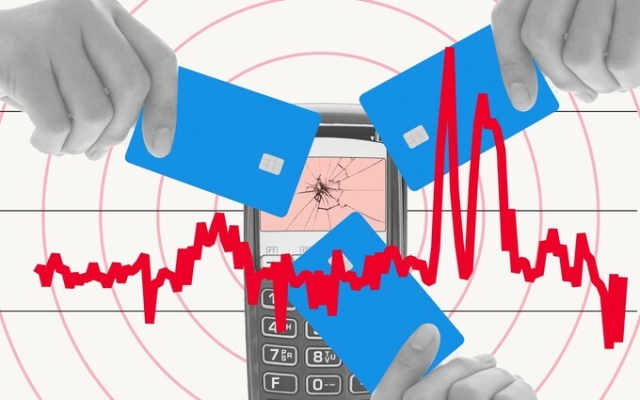
Predictions that the pandemic would be followed by the roaring 20s, just as the Spanish flu ended a hundred years ago, have not aged well. Instead, the UK was engulfed in the worst cost-of-living crisis in decades, with food prices up nearly a fifth and mortgage rates more than doubling in a year. , pubs, bars and restaurants are still crowded and consumers remain surprisingly optimistic, helping June's GDP numbers beat expectations on Friday.
High-profile artists such as Beyoncé and Taylor Swift often sold out with young fans stadium tickets. priced at £100. In the meantime, millions of people have come to cinemas to see Barbie and Oppenheimer.
Most economists have predicted that the UK will fall into a recession, but so far this has not happened. But can the good times last?
A short trap? – UK GDP growth, % change year-over-year.
GFK's Joe Staton, which measures how confident households feel about their finances, jobs and the economy as a whole, admits he was overwhelmed by how strong sentiment was.< /p>
«I'm still surprised how it didn't fall off a cliff, to be honest,» he says of consumer confidence.
Consumers are still gloomy in general. But after the shock of the farm's mini-budget and its aftermath, they became more cheerful almost every month until the beginning of summer.
Even now, when asked whether their financial situation will improve or worsen in a year, only a small majority of households expects the situation to get worse.
This resilience is striking at a time when the news is dominated by the mortgage crisis, rents are rising at a record pace, and food prices are still skyrocketing.
Volumes and retail sales value,
But unlike other crises, unemployment remained at an all-time low, having just risen to 4% from a low of 3.5%.
“I think people feel safe in their jobs despite a slight rise in unemployment. «, says Staton. «When we are safe, we feel confident, and when we feel confident, we spend. I think it's that simple.»
The strength of the economy took analysts by surprise when it emerged that it rose 0.5 percent in June, well ahead of expectations.
Under the hood, the numbers showed strong household consumption, with healthy demand in hotels and restaurants. .
“Compared to January, if you told me that inflation would fall as slowly as it is now, and interest rates would be at 5.25%, and demand would be the same as high as it is now. yes, I would definitely be surprised,” says Elizabeth Martins, an economist at HSBC UK.
“On the other hand, we see evidence with our own eyes and ears around us. You go out to try and get a table for Sunday lunch without making a reservation, or you go to the airport and see who's leaving for vacation.»
It's a far cry from the financial crisis when restaurants «everyone was doing two for one.» suggests trying to get people back so they can spend some money,” she says.
Ruth Gregory of Capital Economics says there are several reasons why the economy has “remained resilient to the dual impact of high interest rates.”
“It has been quite difficult for companies to find workers during the pandemic. They pay higher wages to attract and retain workers. Government handouts to help households pay their utility bills [also] played a role in supporting real household incomes,” she says.
“Thus, real household incomes did not fall as much as many feared. There are also some indications that households may have supported their real spending using savings accumulated during the pandemic.”
Wages rose at a record pace in the three months ended May, at 7.3 %, although in real terms, wages are still falling rapidly.
1207 wage growth
Another factor that many analysts point to is the catch-up effect of the pandemic. People were bored, they spent little money, and many accumulated large savings.
That pent-up energy and catching up is probably driving a certain behavior — a bit like the roaring 20s.< /p>
“I still think we're recovering from lockdown. People who have savings are actually spending their savings even though the cost-of-living crisis continues. It's very controversial, says Staton.
“There are people who suffer, and someone is not affected at all. I think people who have been barely touched continue to work.”
This is echoed by Martins, who says that low-income people have found the last two years «really painful.»
«But the rest of the population, to varying degrees, feels that people have been able to weather a series of shocks.»
p>
However, the warning signs are starting to flash. Data from the British Retail Consortium shows retail sales, which held up well in value terms, were dismal in July.
While households kept record amounts of cash in banks during Covid, there was an increase in May. largest net withdrawal of savings since records began in 1997.
Monthly net change in household deposits
Numbers like this suggest that many can now drain their excess Covid savings.
Meanwhile Brits increased their unsecured loans, which include things like overdrafts, credit cards and payday loans, to their highest level in five years in July.
Consumer confidence also shifted in July, weakening for the first time this year.
The way households weathered the cost of living crisis could be a tale of two groups: those on low incomes were hit on all sides while others are still enjoying the chance to live a normal life spending money on travel, food and entertainment.
But the problem seems to be spreading.
Seasonally adjusted consumer credit
UK's largest pawnshop H&T earlier this week reported a 31% rise in profits in the first half of the year. /p>
The firm, which also retails new and used jewelry, said the surge reflects the hardship many people face in trying to survive.
“We expect strong demand for our core pawnshop product to continue as the impact of inflation on consumers increases the need for short-term loans by small amounts,” the statement said. In the first half of the year, the number of clients increased by 13 percent compared to the same period in 2022.
The people he helps are more in debt than before, with the average debt increasing by a quarter in a year.
p>
Despite the fact that the salaries of clients increased by an average of 9% over the same time, a third, after receiving a full consultation on debts, found themselves without money to cover basic expenses.
Insolvency has also been steadily rising and spreading from smaller firms to larger ones, with Wilko being the latest major giant to collapse.
Rising interest rates, which lower inflation by raising unemployment and limiting people's ability to spend money by increasing mortgages loans are getting more expensive — it also takes time to bite off.
James Smith of the Resolution Foundation notes that even though the cost of borrowing has risen to its highest level since the financial crisis, only 30% of its impact has yet to felt. .
These indicators indicate that there may be new challenges ahead. Martins admits that economists often fail to predict recessions in time.
“I don’t want to downplay the risks that this could end badly,” she says, adding that she is worried about rents and public finances. and lagging interest rates.
«The only question is whether all this together is enough to cause a recession and a big spike in unemployment, or we can continue to surprise everyone for the better.»
p>








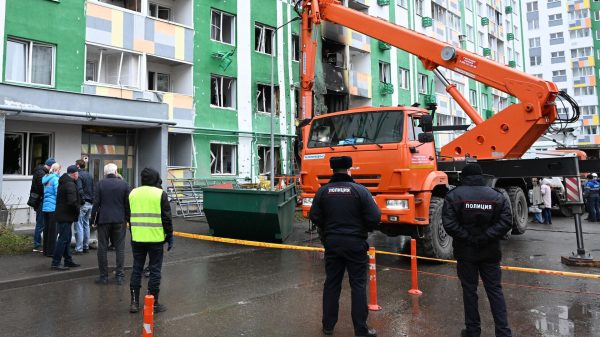
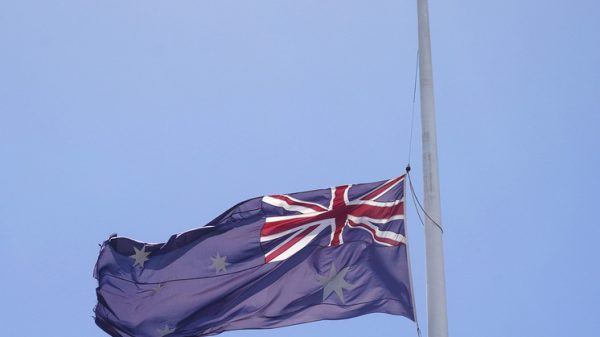
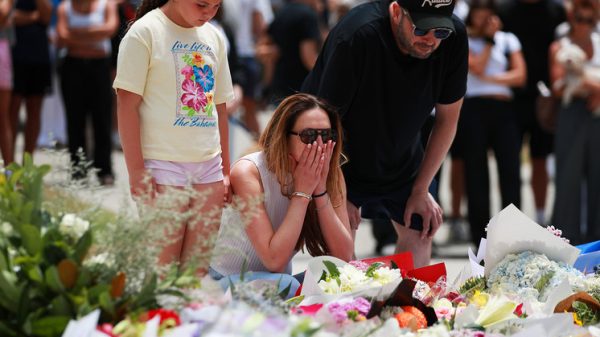




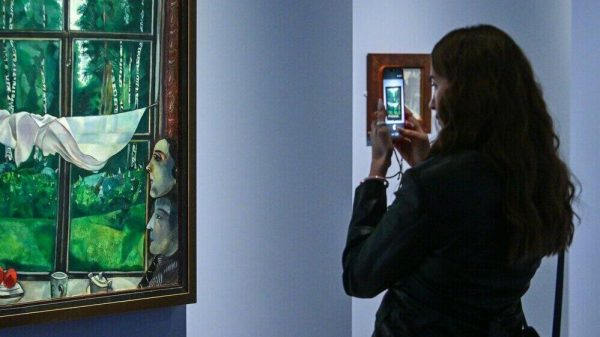


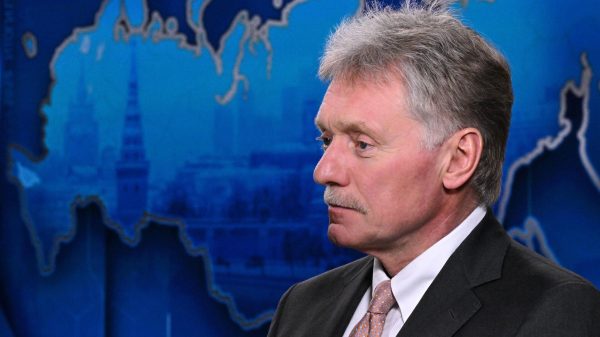

































Свежие комментарии